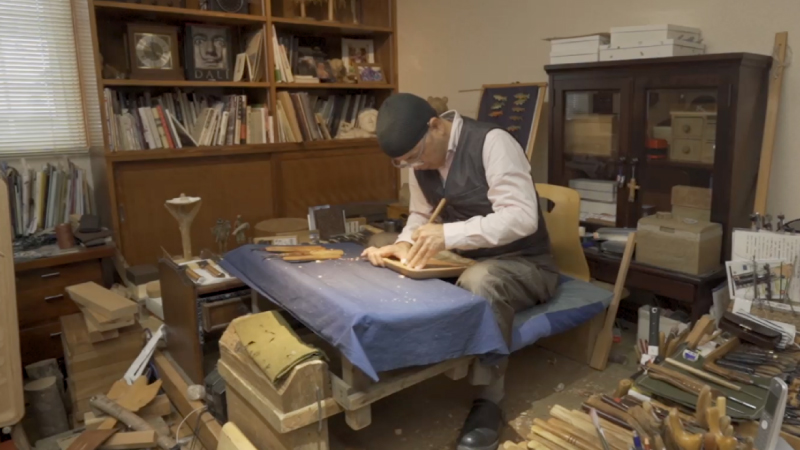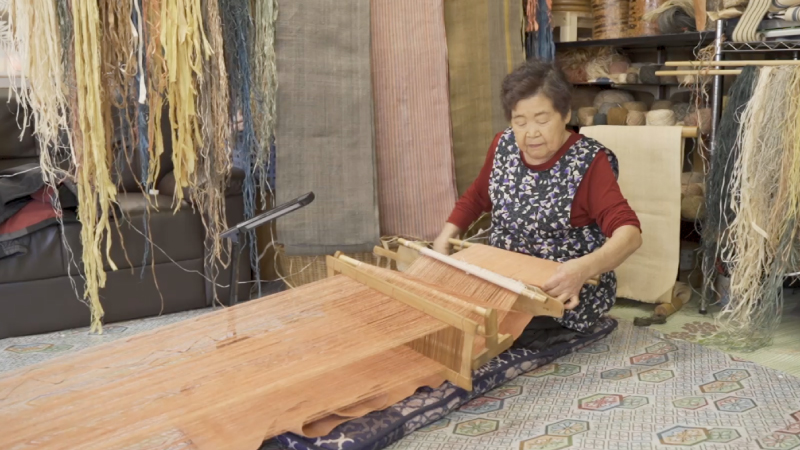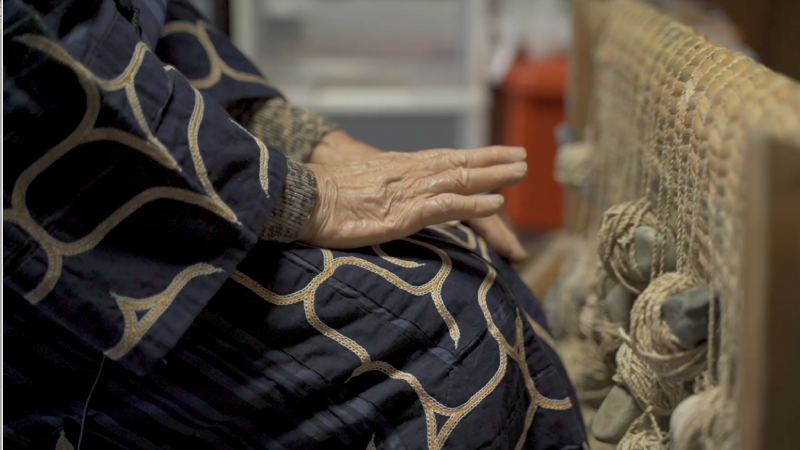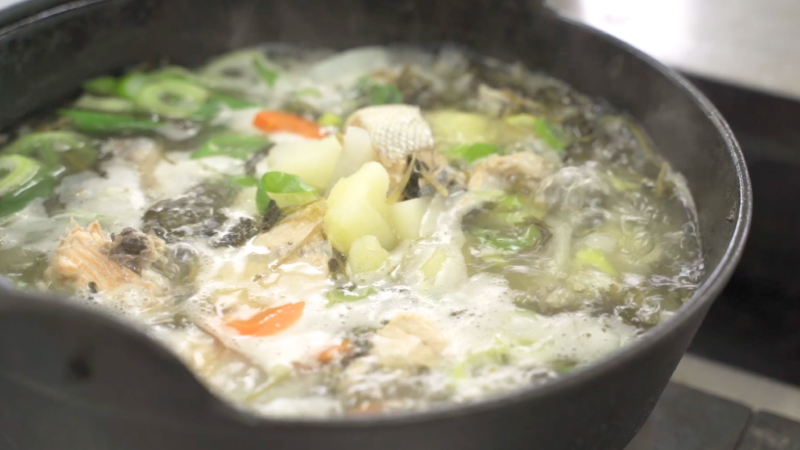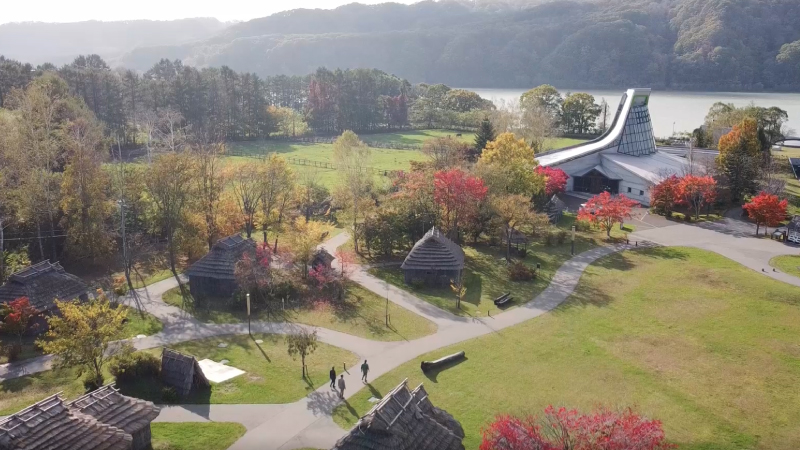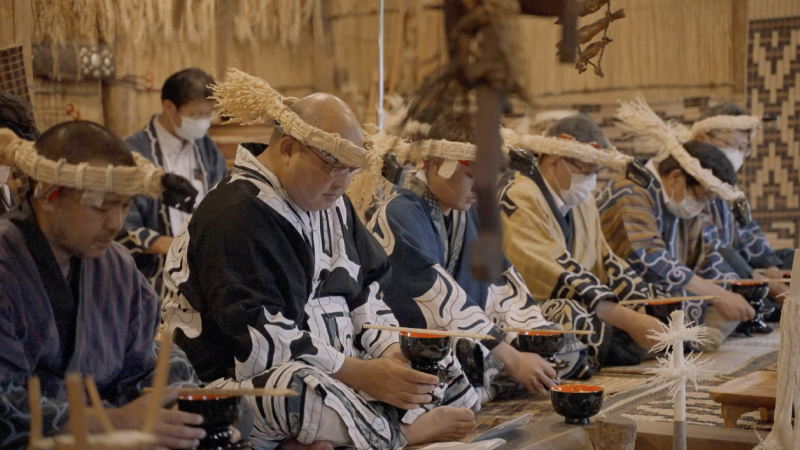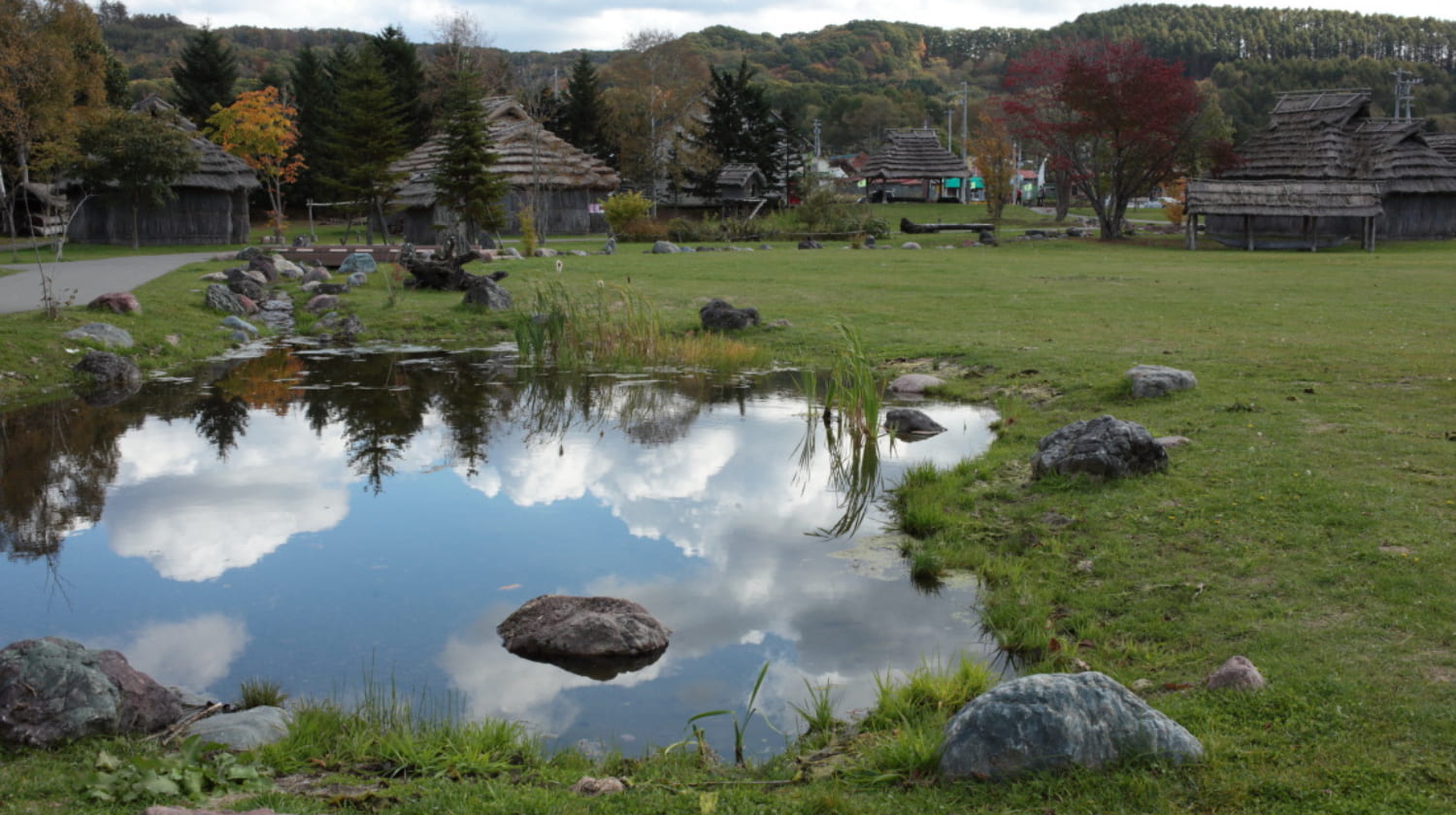
Traditional Crafts: Nibutani Ita
Nibutani Ita is a flat wooden tray made in a style that has been handed down for generations in the Saru River basin, which is now concentrated in Nibutani, Biratori. They are products of the beautiful interplay between craft, tradition, and the creative skill of living artisans.
Traditional Crafts: Nibutani Attus
Attus is a kind of plain-weave fabric. Clothing made from that fabric is also called attus. It is woven from bark fibers of trees like Japanese linden or Manchurian elm. In Nibutani, weavers still use traditional tools and skills passed down for generations.
Oral Literature
The stories of the Ainu have been passed down orally. Their oral literature includes the Kamuy-yukar, with stories of the spirits and creatures of the natural landscape like bears, Blakiston's fish owl, and the kamuy spirits of the fire or lightning; Yukar, which are stories of a young boy's adventures; and Uwepeker, which are folktales featuring regular people as main characters.
Food
Even in Biratori, opportunities to eat traditional Ainu food are growing rarer. That is exactly why some are working to preserve traditional foodways. Ohaw is a soup made with whatever ingredients are available at the time, and for this demonstration we had Salmon Ohaw. The natural flavors of the salmon and seasonal vegetables are enhanced with a bit of salt.
Biratori Municipal Nibutani Ainu Culture Museum
The first place you should go on trip to Biratori is the Biratori Municipal Nibutani Ainu Culture Museum, which is located in Nibutani Kotan, the center of Ainu culture. Visitors can learn about things such as the Ainu lifestyle, culture, and everyday tools in this region that developed along the Saru River basin. The museum director provides information about the role of this museum and more.
Traditional Ceremony Cipsanke
Cipsanke means “boat lowering” in the Ainu language, and is a launching ceremony for boats built using an ancient technique. It is a traditional event held on the Saru River every year in late August, and is attended by many tourists (in 2021, it will be held only for related parties). What does the Cipsanke involve and what are the wishes of the people who try to preserve and pass on this ceremony?

